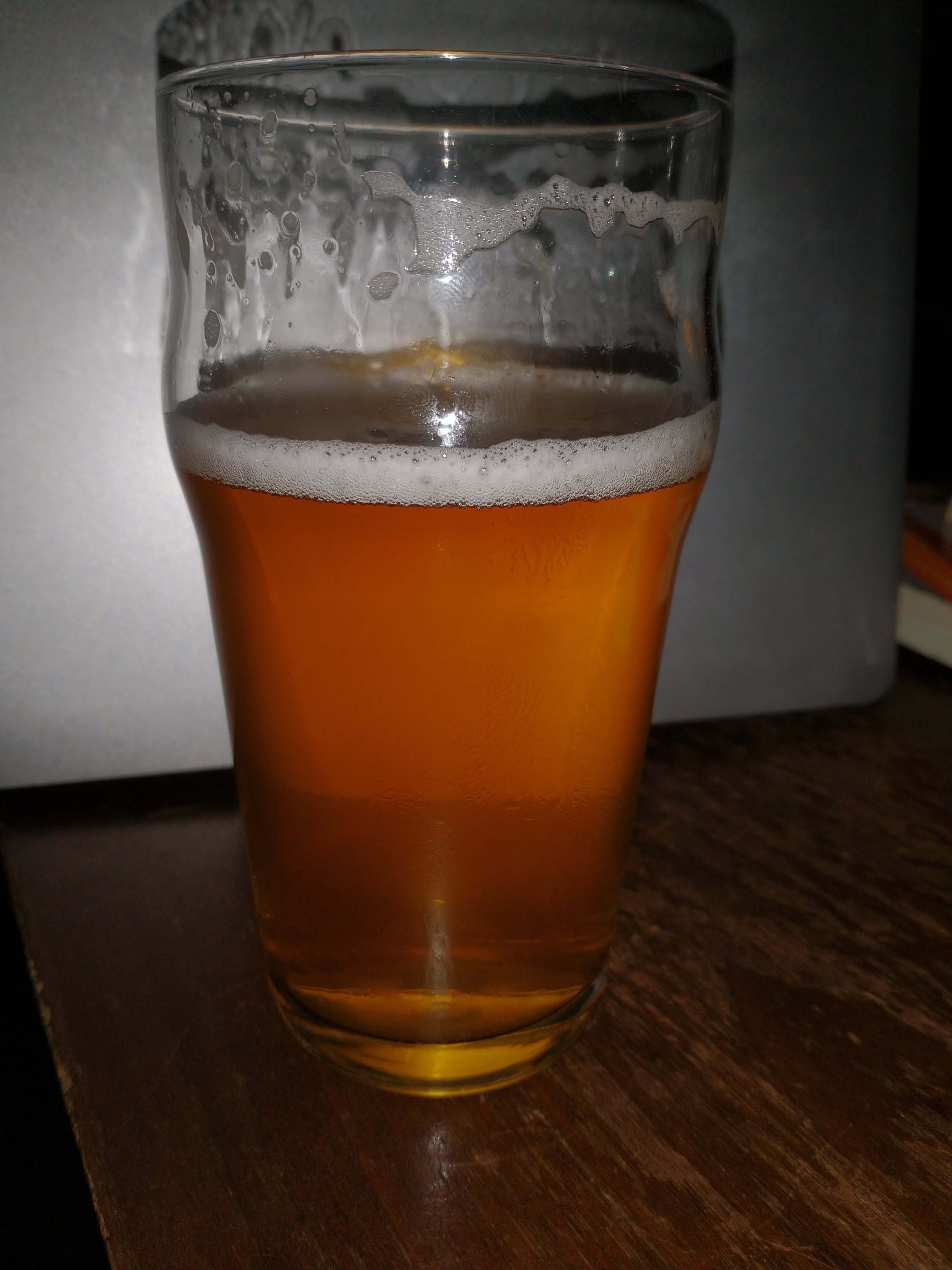Here's a glass of the ale I mentioned above (the latest in a series):
1.042/1.006 (85% AA)
60% Ashburne Mild malt
20% US pilsner
20% white sugar
34 IBU of Cluster at 45 minutes
S-04, second pitch, fermentation started at about 69, raised to 72 when krausen subsided on day 2
carbed to 3 vol
water is low-alkalinity magic well water, calcium boosted to 125ppm, sulphate/chloride balanced
Currently suffering from a wicked chill haze as I am serving it at 37 degrees, but it was bright (not quite polished) before chilling. The chill haze seems to be easing off.
The color came through darker and redder than it actually is. I would call it on the dark side of golden.
The predominant taste is sweet, but a stout bitterness is right behind that, and light fruits and green hops are subtly present throughout. The finish is not crisp, but dry--somewhat surprising considering how sweet the whole package comes across. It is thick in the mouth, especially considering the low FG. Blindfolded, I would guess the FG over 1.015. It is lovely, but too thick and malty for the goal I am aiming for (a sparkling ale that fills the light lager slot in the Southern summer). The next iteration will have corn (again), less Ashburne, and less bitterness.
Drinking this now, I definitely stand by my prior description of Ashburne Mild malt: It is very malty--primarily sweet (and slightly fruity even) rather than rich (like Munich). It is very dextrinous. I don't see an effect on terminal gravity, but it is plain as day in the mouthfeel. Other than my "American sparkling mild" experiments, I can see a few good uses for it:
1. Adding a layer of real sweetness in a complex malt bill. A brown ale (American or English) for example. 10-20% would do it and nobody would know how you did it.
2. Direct replacement for light crystal in any beer. It is sweet and dextrinous, but in a different way than light crystal. I would say use 2-3 times as much of this as you were planning to use crystal.
3. Putting some substance into a very small beer. Contrary to some opinions above, I think it would go really nicely into an English mild at 15-30% or so. It would not be easy to pick out, but it would definitely make a 3.6% ale drink a lot bigger without adding strong flavors or syrupiness.
4. At some point, a time comes in a man's life when he wants to brew an English ale with US malt (I know, I know). If that time for me was now, I would use US pale ale malt with 10% of this for sweetness and 3% of a light roasted (biscuit, amber) for dryness--and maybe a pinch of sugar to get the protein down, depending. If I only had 2-row or pilsner, I might use 50% more of each. And I would not tell anyone.





![Craft A Brew - Safale S-04 Dry Yeast - Fermentis - English Ale Dry Yeast - For English and American Ales and Hard Apple Ciders - Ingredients for Home Brewing - Beer Making Supplies - [1 Pack]](https://m.media-amazon.com/images/I/41fVGNh6JfL._SL500_.jpg)




















































